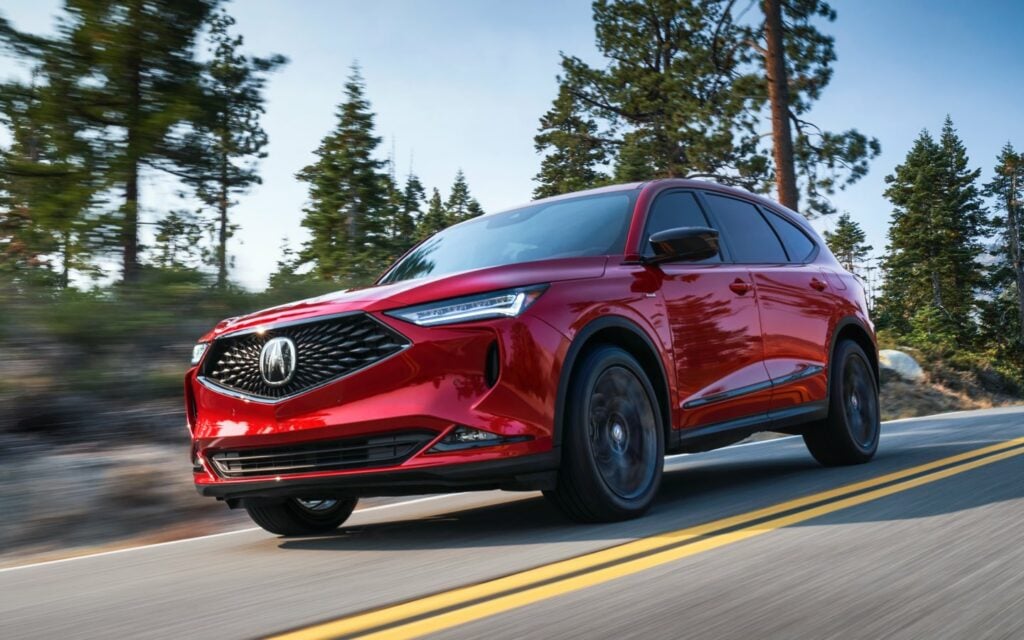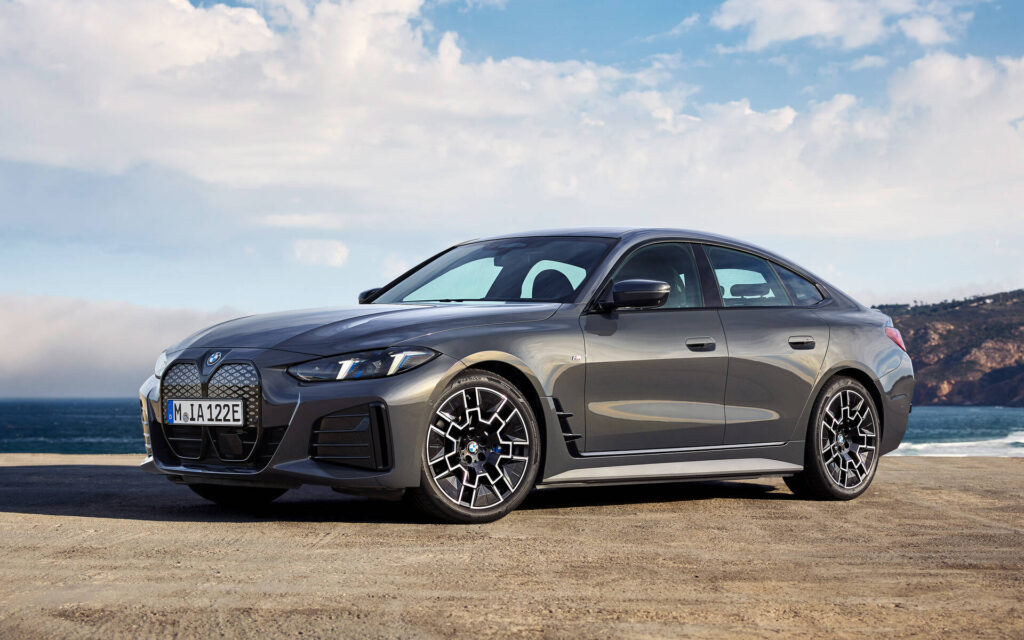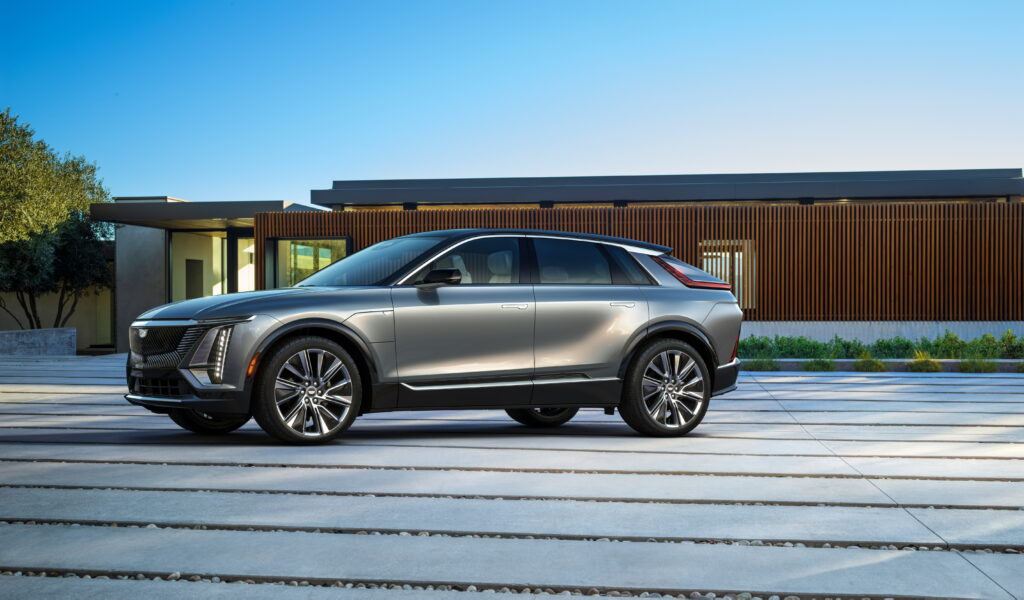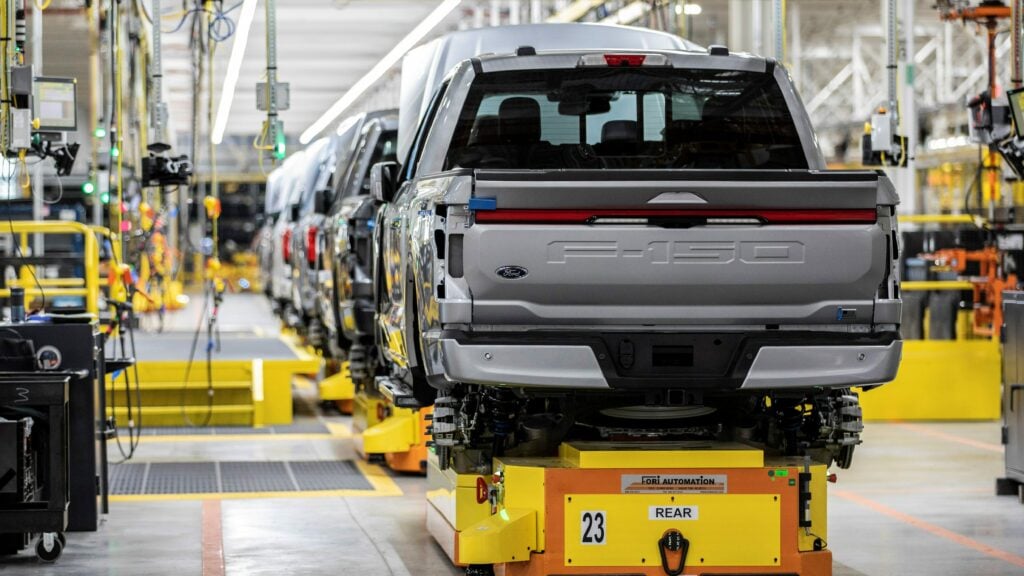CarEdge saved me over 4,500 dollars on a brand new Honda Pilot. I can't say thank you enough.
Price intelligence
Find a wide range of vehicle listings with market insights on new and used listings near you.


Help us personalize your CarEdge experience — it only takes a second.
Your answers help us personalize your CarEdge journey — we’ll follow up with tips and next steps that match your buying timeline.

When it comes to vehicle recalls, 2025 is already shaping up to be a wild year. Some automakers are off to a rough start with multiple high-impact recalls, while others seem to be staying clear of trouble—for now. Let’s take a closer look at which automakers are facing the most scrutiny from regulators and what drivers need to know.

Last year, Stellantis unseated Ford as the automaker with the highest number of recalls, issuing 71 in total. In 2025, Ford Motor Company is once again leading the industry in total recalls, according to NHTSA reporting. As of May 15, Ford has issued 51 recalls, affecting over 1.8 million vehicles. That’s more than double the number of vehicles recalled by the next automaker on the list.
It’s been the year of the seatbelt recall for Ford. Models like the Explorer, Aviator, Expedition, and Navigator have all faced recalls for seatbelt-related issues that could compromise passenger safety.
Here are the Ford vehicles with the most recalls in 2025 (so far):
Check if your Ford vehicle is included in recalls.

With 14 recalls affecting 441,587 vehicles, Volkswagen Group isn’t having an easy 2025 either. Several major recalls have affected both Volkswagen and Audi models.
One of the strangest recalls this year? The all-electric Volkswagen ID.BUZZ was recalled because its third-row bench seat is too wide for the number of seatbelts provided. That’s…not something we see every day.
Top VW models with the most recalls:
Check if your Volkswagen vehicle is included in recalls.

General Motors has issued 11 recalls so far, affecting 773,033 vehicles. A massive recall of nearly 600,000 full-size trucks and SUVs equipped with the 6.2L V8 engine is the biggest driver of that number.
The reason? A defect in the connecting rod and crankshaft could lead to engine damage—or worse, complete failure.
GM models with the most recalls:
Check if your GM vehicle is included in recalls.

FCA US (now part of Stellantis) also lands on the list with 11 recalls, covering 140,197 vehicles. The most notable is the recall of 63,000 Jeep Cherokees that may lose drive power due to a faulty power transfer unit.
Models most affected by FCA recalls:
Check if your Jeep, Ram, Dodge, or other FCA vehicle is included in recalls.

So far in 2025, Mercedes-Benz has issued 9 recalls for just 37,563 vehicles. Some were fairly routine, like a recall for S-Class brake fluid leaks, but others were more concerning—like fire risks related to the high-voltage batteries in some electric models.
Vehicles impacted include:
Check if your Mercedes-Benz is included in recalls.

Honda has also logged 9 recalls this year, affecting 469,289 vehicles. The most significant issue? A software glitch in the fuel injection system that may cause engine stalling or a complete loss of power in newer Honda Pilot and Acura MDX models.
Honda models with the most recalls:
Check if your Honda is included in recalls.
Not every brand has had a tough year. A few automakers have managed to keep their recall numbers remarkably low so far in 2025.
Here are the major automakers with the fewest recalls through mid-May:
Keep in mind that some brands like Tesla may issue software-based recalls that don’t require a service visit. Still, fewer recalls generally signal stronger quality control—or fewer reported issues.
If you’re worried your vehicle might be affected by one of this year’s recalls, don’t wait. Check your VIN for free using the NHTSA Recall Lookup Tool.
And if you’re shopping for a vehicle and want to avoid future headaches, be sure to research recall history, reliability, and maintenance costs with CarEdge Research. Whether you’re buying used or new, making an informed choice starts with knowing the facts.

Looking to treat yourself this Memorial Day? Whether you’re eyeing a luxurious sedan or a high-performance SUV, Memorial Day sales present a great opportunity to make your move—if you know where to look.
We’ve dug through the latest incentives and pulled together the best Memorial Day luxury car and SUV deals. From 0% APR financing to the cheapest luxury lease offers right now, there’s plenty to get excited about in May 2025.

2025 Infiniti QX60:
1.9% APR for 60 months, plus $1,000 bonus cash.
Current Infiniti owners or lessees may qualify for an extra $1,500 loyalty bonus.

2025 Tesla Model 3:
0% APR for 60 months, or lease from $349/month for 24 months with $0 down (before taxes and fees).
2025 Tesla Model Y:
2.99% APR for 72 months, or lease from $399/month for 36 months with $2,999 due at signing (before taxes and fees).

2025 BMW 3 Series:
4.99% APR for 48 months
This offer comes ahead of an expected redesign for the 3 Series in 2026.
2025 BMW i4:
2.99% APR for 60 months
2025 BMW X5:
3.99% APR for 48 months

2025 Audi Q8 55 TFSI quattro:
$4,000 cash offer
2025 Audi A6 & A7 Sedans:
3.99% APR for 72 months (select trims)

2025 EQB 250+ SUV:
Lease from $409/month for 36 months with $5,003 due at signing (before taxes and fees)

2025 R1T & R1S:
Receive up to $10,500 in lease offers, including:
Learn more about Rivian’s May offers at Rivian.com.

2025 Range Rover Velar, Range Rover Sport, Discovery:
3.9% APR for 60 months

2025 Cadillac Lyriq:
2.9% APR for 60 months, plus a $2,000 cash allowance

2025 Jaguar F-PACE:
2.9% APR for 60 months
Luxury vehicles often come with dealer markups, especially for models with limited production and performance trims. Don’t assume the advertised deal is the best you can get. Use CarEdge tools to compare local listings, or let our Concierge team do the negotiating for you. Let us know how we can help!
You may also like 👉 Free Cost of Ownership Data and Value Ratings

If you’re waiting to buy a 2026 model hoping for better prices, you might want to reconsider. A growing number of 2026 vehicles are debuting with higher MSRPs—some subtly, others sharply. Only a small fraction of 2026 models are out now, but the list is growing each day. We analyzed base and fully-loaded MSRP changes from 2025 to 2026, and the trends are clear: price hikes are back.
We analyzed recently announced pricing for 15 2026 models, and compared MSRPs to their 2025 counterparts. Here’s what we found:
While these numbers might not seem dramatic, they’re not pocket change either.

Some models saw bigger-than-average bumps. Here’s a look at the Top 5 increases by base MSRP:
For a broader look at 2025 car prices, here are the MSRP changes for every 2026 model announced as of early May 2025. Prices included mandatory destination fees:
| Make | Model | 2025 Base MSRP | 2026 Base MSRP | Base Price Change | 2025 Top-End MSRP | 2026 Top-End MSRP | Top-End Price Change |
|---|---|---|---|---|---|---|---|
| BMW | 4-Series | $52,325 | $52,675 | 0.66% | $74,025 | $76,225 | 2.89% |
| BMW | 5-Series | $59,875 | $59,875 | 0.00% | $74,575 | $74,575 | 0.00% |
| BMW | 8-Series | $92,875 | $92,875 | 0.00% | $117,175 | $117,175 | 0.00% |
| BMW | i5 | $68,275 | $68,275 | 0.00% | $71,275 | $71,275 | 0.00% |
| BMW | M4 | $80,875 | $81,275 | 0.49% | $96,295 | $97,375 | 1.11% |
| Buick | Encore GX | $27,395 | $27,295 | -0.37% | $32,895 | $32,795 | -0.30% |
| Cadillac | CT4 | $36,490 | $37,095 | 1.63% | $48,790 | $51,495 | 5.25% |
| Cadillac | CT5 | $49,090 | $50,095 | 2.01% | $58,490 | $59,095 | 1.02% |
| Chevrolet | Equinox | $29,995 | $29,995 | 0.00% | $34,395 | $34,395 | 0.00% |
| Chevrolet | Trailblazer | $24,495 | $24,395 | -0.41% | $29,095 | $28,995 | -0.34% |
| Genesis | Electrified GV70 | $68,400 | $70,700 | 3.25% | $73,750 | $76,800 | 3.97% |
| Genesis | GV70 | $47,650 | $49,435 | 3.61% | $69,850 | $71,545 | 2.37% |
| Honda | Passport | $43,850 | $46,200 | 5.09% | $49,920 | $53,900 | 7.38% |
| Kia | Sportage | $28,785 | $30,085 | 4.32% | $39,685 | $40,985 | 3.17% |
| Toyota | Crown | $42,575 | $43,050 | 1.10% | $56,125 | $56,600 | 0.84% |

There are a few major forces behind the 2026 price increases. One of the biggest is the impact of tariffs. While the full consequences haven’t hit just yet, many automakers are already adjusting their pricing strategies in anticipation of higher import costs, particularly for vehicles manufactured outside the U.S.
Another factor is the inclusion of new technology and features in 2026 models. Whether it’s upgraded safety features, enhanced driver-assistance systems, or the latest battery tech in EVs, these improvements often come with a higher price tag.
Electrification hasn’t been cheap for legacy automakers like Ford, General Motors, and Stellantis. As OEMs look to make up for massive capital investments in EV powertrains, even ICE vehicle prices are pushed higher.
Inflation and supply chain pressures are still in play, too. Costs for raw materials, parts, and labor have continued to rise, and automakers are passing those expenses on to consumers.
Finally, pricing changes may be strategic. Rather than implementing massive hikes all at once, automakers could be gradually increasing MSRPs to soften the blow—and avoid backlash—from buyers and headlines.
For car buyers, the biggest takeaway is simple: don’t assume that newer is better. In many cases, 2025 models are nearly identical to their 2026 replacements. As the year progresses, more 2025 models will be advertised with generous incentives, and better negotiation opportunities will follow.
See how CarEdge can help you save thousands of dollars, and eliminate the stress of car buying.
2026 may be shaping up as the year of the quiet price hike. If you’re shopping for a new car this year, pay close attention to MSRP changes—especially for models imported from tariff-affected regions.
🔎 Want help navigating your next purchase? Connect with a CarEdge expert and shop with confidence.

Honda’s latest earnings report paints a concerning picture for the automaker’s global operations, and new tariffs are playing a major role. The Japanese auto giant posted a 76% drop in operating profit for the fiscal fourth quarter, far below analyst expectations. While revenue grew modestly year-over-year, Honda’s leadership made it clear: global tariff policies are hitting harder than expected, and the uncertainty is making it nearly impossible to plan ahead.
For the fiscal year ending March 31, 2025, Honda reported:
Sales fell sharply in China and Southeast Asia, and while Honda’s hybrid sales expanded in North America, the company is now bracing for the full impact of U.S. tariffs.
Honda’s executives directly blamed the steep earnings miss on the unpredictable and widespread nature of global tariffs. In a statement, the company explained that frequent revisions to tariff policies make it difficult to formulate a reliable business outlook.
Looking ahead, things may get worse before they get better. Honda projects:
As automakers adapt to shifting trade policies, Honda is already adjusting its strategy. In March, it was reported that Honda will move production of its next-generation Civic Hybrid to Indiana—rather than Mexico—in a clear attempt to dodge the new 25% U.S. import tariff.
Now, Honda is delaying a major planned investment in Canada. “The growth of the electric vehicle market has slowed more than initially expected, making it difficult to anticipate further progress,” CEO Toshihiro Mibe said May 13, while announcing fiscal-year financial results. “Therefore, we have decided to postpone large-scale investments in Canada.”

Despite Honda’s large U.S. manufacturing footprint, several popular models are still imported from Canada and Mexico—and are therefore subject to the new 25% import tariff:
Made in Canada and imported to the U.S.:
Made in Mexico and imported to the U.S.:
For now, Honda has not announced price increases on these models, but any shift in sourcing or supply could quickly push prices higher at the dealership.
Use this free Auto Tariff Checker to see impacted car models
As of early May, car prices in the U.S. have not increased due to tariffs—at least not yet. However, Honda’s latest guidance and production adjustments suggest that price hikes could be coming soon, especially on vehicles imported from Mexico and Canada. If you’re considering a CR-V, HR-V, or the new Prologue, it may be worth watching the market closely—or acting sooner rather than later.


Summer is nearly here, and for many, that means more time on the road. But before you hit the highway, take a moment to get your car summer-ready.
From rising temps to sudden downpours and road trip miles, summer driving puts a unique kind of stress on your vehicle. The good news? A few simple steps now can prevent big problems later—and save you money along the way.
Here’s how to prepare your car for the summer season, in order of what matters most.
As temperatures rise, so does your tire pressure—about 1 PSI for every 10°F increase. Driving with overinflated or underinflated tires not only affects fuel efficiency but also increases the risk of a blowout.
What to do:
Seasonally checking your tire pressure is especially important for drivers in regions with both extremes: hot summers and cold winters.
Rain is common in many regions during summer, and worn-out tires make hydroplaning far more likely. Take this step extra seriously if there’s the slightest change you’ll be on the road during a thunderstorm this summer.
What to do:
Your wipers take a beating year-round, and they’re your first line of defense in a sudden summer thunderstorm. If they’re skipping, streaking, or chattering, it’s time to swap them out.
What to do:
There’s nothing worse than discovering your A/C isn’t working on a 90-degree day. Catch issues now before you’re stuck sweating in traffic.
What to do:
A clean cabin air filter improves airflow and air quality, especially during allergy season. And your engine air filter? It helps your car ‘breathe’ better and run more efficiently.
What to do:
Summer driving puts extra strain on every part of your vehicle—and your fluids are your car’s lifeblood.
What to do:
Heat kills batteries faster than cold does. If your battery is on the older side, summer is when it’s most likely to give up.
What to do:
Belts and hoses are often overlooked, but they’re vulnerable to cracking and swelling in hot conditions.
What to do:
Even the best-prepared vehicles can hit a snag. A stocked emergency kit can turn a bad day into a manageable one.
What to include:
Window tinting isn’t just for looks—it keeps your interior cooler and prevents your dashboard and seats from sun damage.
What to do:

Planning extra miles this summer? Don’t let one breakdown ruin your vacation—or your budget.
Why it matters:
👉 Get your warranty quote in just a few clicks
Your car doesn’t need a full overhaul to be summer-ready—but it does need your attention. A few minutes of maintenance can make a huge difference in your driving experience, fuel efficiency, and repair bills. Summer is also a great time to buy or lease a car. CarEdge’s consumer advocates can help you save more and stress less in 2025. We’re simply here to help!